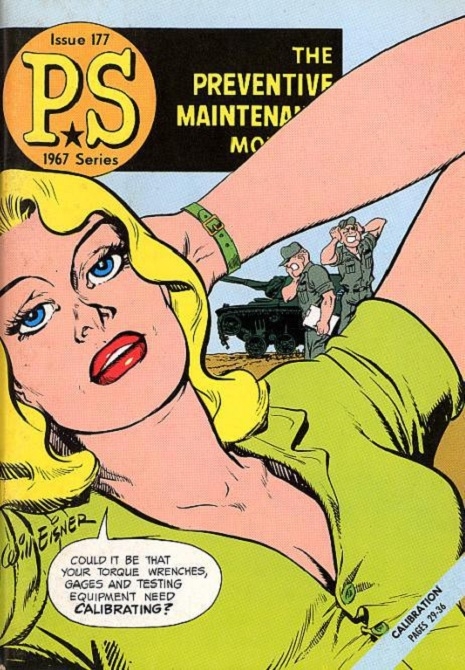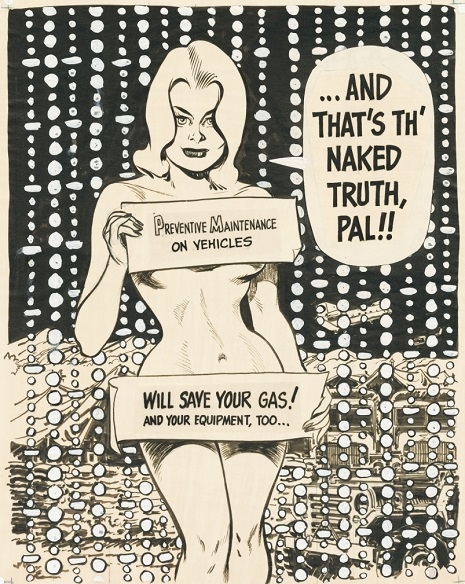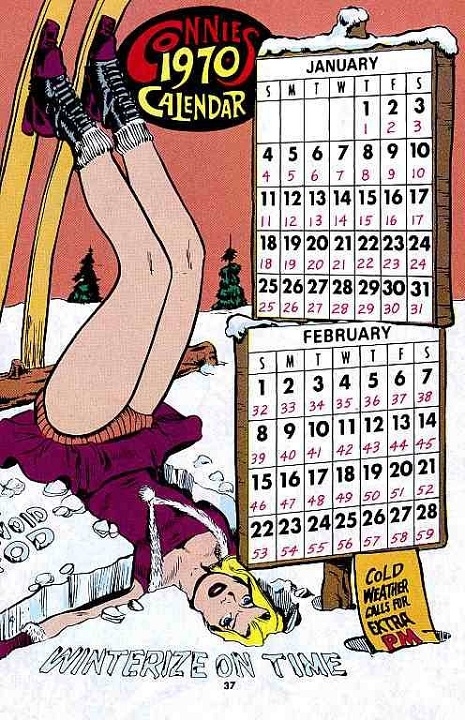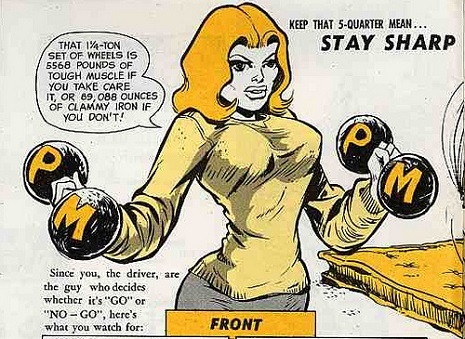
1066 huscarl, Battle of Hastings
“‘The Anglo-Saxon warrior at Hastings is perhaps not so very different from the British “Tommy” in the trenches,’ photographer Thom Atkinson says. ‘At the Battle of Hastings, soldiers’ choice of weaponry was extensive.”
With the 100th anniversary of the assassination of Archduke Franz Ferdinand a few weeks ago, we’re now in for four-plus years of grim remembrance. That may be the reason for the recent appearance of this grim, enthralling set of pictures, documenting in exquisite detail the exact gear issued to British military personnel for thirteen major conflicts spanning the years 1066 (you ought to know that date) to the present day.
The photos were taken by Thom Atkinson, and some of his thoughts as well as other commentary that goes with the set are reproduced with the pictures—U.K. terminology such as “draughts” has been retained, but some spellings have been Americanized, deal with it.
The pictures tend to emphasize the soldier’s role as an unwilling participant in combat. Drained of anyone’s specific personality and reduced to ordnance and the many other essential items—invariably issued in a top-down fashion by military planners—what remains are the two essential imperatives of a soldier’s lot: to kill as many of the enemy as possible and to survive the weeks, months, or years of panic, desperation, despair, fatigue, hunger, rage, etc., not to mention the major trauma to the body that is a live potentiality at any moment.
No amount of technology can do away with the fact that war always demands that its participants push beyond all extremes: extremes of environment, extremes of fatigue, extremes of risk, extremes of pain. If it were not so—if it were not the case that any combatant (below a certain rank, in the actual theater of war) on either side can die at any time—it would not be war, it would be something else.
Thus the materials and the methods change, but the ends remain pretty similar: tools to chop, tools to dig, tools to divert, tools to stab, tools to enable solace, tools to feed, tools to launch projectiles, tools to orient. And so forth. And that’s why these pictures, aside from Mr. Atkinson’s clear intent in highlighting it, all seem eerily the same.
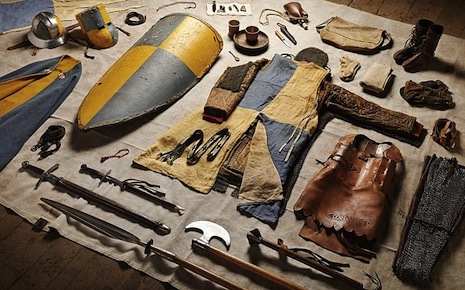
1244 mounted knight, Siege of Jerusalem
“Re-enactment groups, collectors, historians and serving soldiers helped photographer Thom Atkinson assemble the components for each shot. ‘It was hard to track down knowledgeable people with the correct equipment,’ he says. ‘The pictures are really the product of their knowledge and experience.’”

1415 fighting archer, Battle of Agincourt
“Having worked on projects with the Wellcome Trust and the Natural History Museum, photographer Thom Atkinson has turned his focus to what he describes as ‘the mythology surrounding Britain’s relationship with war.’”
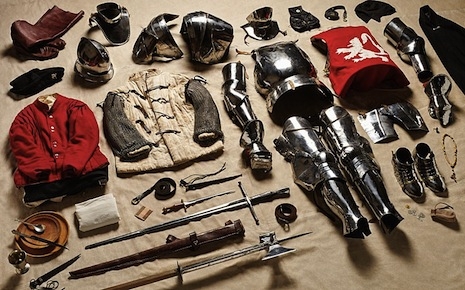
1485 Yorkist man-at-arms, Battle of Bosworth
“‘There’s a spoon in every picture,’ Atkinson says. ‘I think that’s wonderful. The requirement of food, and the experience of eating, hasn’t changed in 1,000 years. It’s the same with warmth, water, protection, entertainment.’”

1588 trainband caliverman, Tilbury
“The similarities between the kits are as startling as the differences. Notepads become iPads, 18th-century bowls mirror modern mess tins; games such as chess or cards appear regularly.”

1645 New Model Army musketeer, Battle of Naseby
“Each kit represents the personal equipment carried by a notional common British soldier at a landmark battle over the past millennium. It is a sequence punctuated by Bosworth, Naseby, Waterloo, the Somme, Arnhem and the Falklands—bookended by the Battle of Hastings and Helmand Province.”
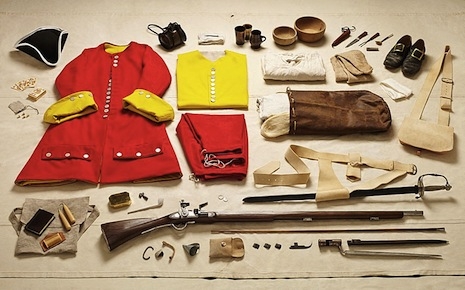
1709 private sentinel, Battle of Malplaquet
“Atkinson says the project, which took him nine months, was an education. ‘I’ve never been a soldier. It’s difficult to look in on a subject like this and completely understand it. I wanted it to be about people. Watching everything unfold, I begin to feel that we really are the same creatures with the same fundamental needs.’”

1815 private soldier, Battle of Waterloo
“Kit issued to soldiers fighting in the Battle of Waterloo included a pewter tankard and a draughts set.”

1854 private soldier, Rifle Brigade, Battle of Alma
“Each picture depicts the bandages, bayonets and bullets of survival, and the hooks on which humanity hangs: letter paper, prayer books and Bibles.”

1916 private soldier, Battle of the Somme
“While the First World War was the first modern war, as the Somme kit illustrates, it was also primitive. Along with his gas mask a private would be issued with a spiked ‘trench club’ – almost identical to medieval weapons.”
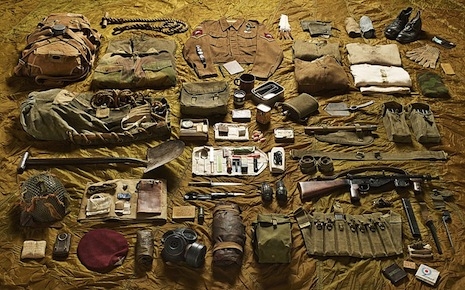
1944 lance corporal, Parachute Brigade, Battle of Arnhem
“Each photograph shows a soldier’s world condensed into a pared-down manifest of defenses, provisions and distractions. There is the formal (as issued by the quartermaster and armorer) and the personal (timepieces, crucifixes, combs and shaving brushes).”
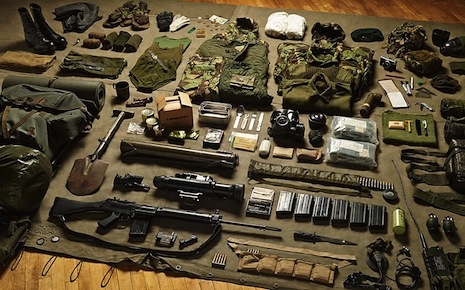
1982 Royal Marine Commando, Falklands conflict
“From the cumbersome armor worn by a Yorkist man-at-arms in 1485 to the packs yomped into Port Stanley on the backs of Royal Marines five centuries later, the literal burden of a soldier’s endeavor is on view.”
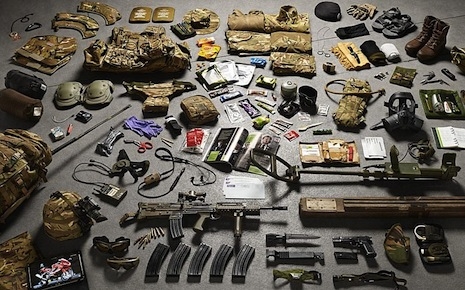
2014 close-support sapper, Royal Engineers, Helmland Province
“The evolution of technology that emerges from the series is a process that has accelerated over the past century. The pocket watch of 1916 is today a waterproof digital wristwatch; the bolt-action Lee-Enfield rifle has been replaced by laser-sighted light assault carbines; and lightweight camouflage Kevlar vests take the place of khaki woolen Pattern service tunics.”
Posted by Martin Schneider
|
08.05.2014
11:22 am
|
